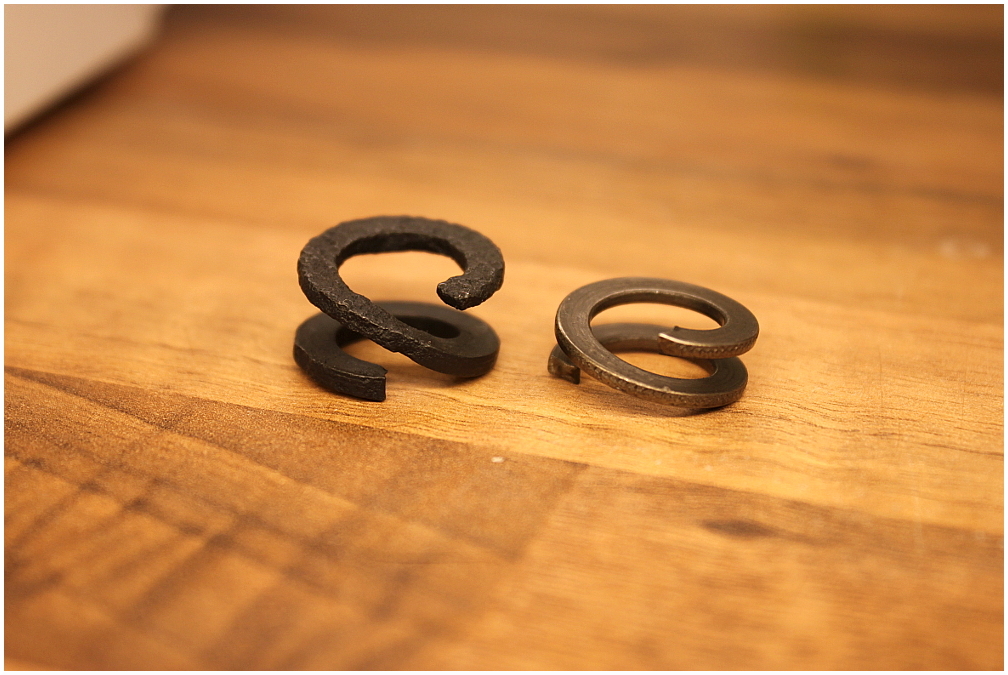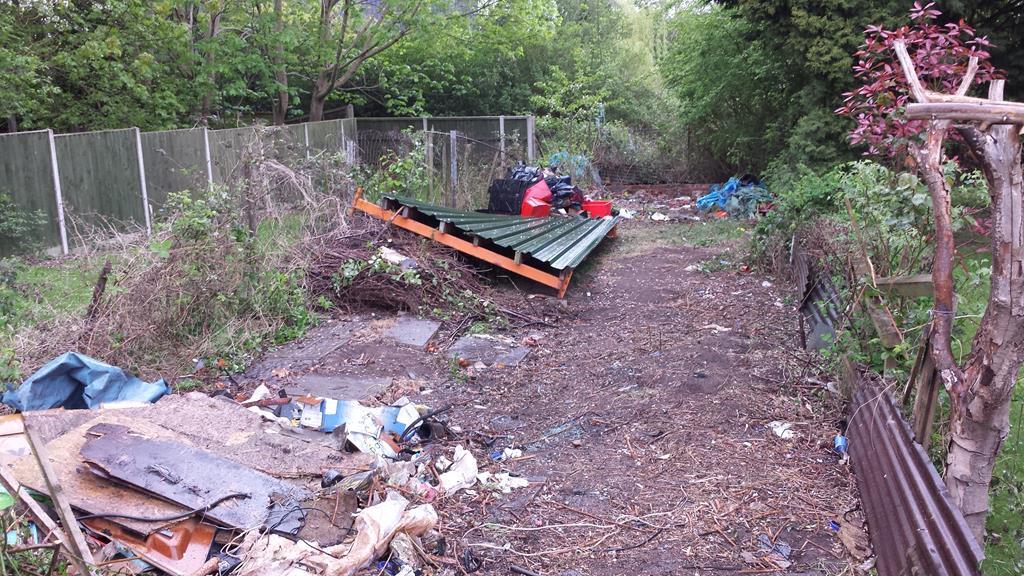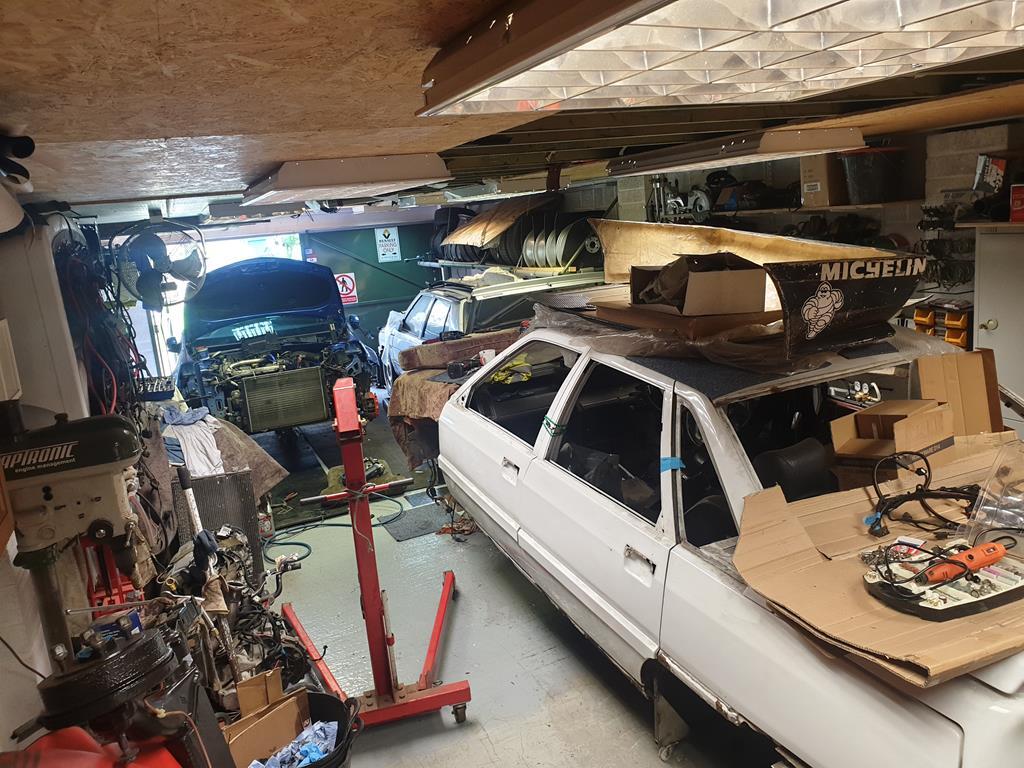The next job to tackle in the garage is to restore a bricked-up doorway to use.
At the moment the only access to the building is via the vehicle doors, which can't be locked from the inside. It would be a lot easier if I could use this door again...

The doorway is a rather odd size (everything about the building is odd), so an off-the-shelf door as supplied by the likes of Wickes, B&Q, etc, won't fit. Besides which, I wanted something with a decent level of security.
After a look around the internet to see what was available I reckoned that a steel doorset (door + frame as one assembly) from
Latham's Steel Security Doorsets would do the job.
They make doors in a range of different sizes, and the smallest size available in the
budget security door range looked like it should fit my non-standard door aperture, give a good level of scrote-resistance, and not cost too much.
So I bought one.

The door is upside down in these photos....
Although it's supposedly one prefabricated assembly of door plus frame, in practice the door step (aka the threshold, aka the bit at the bottom of the frame) is supplied as a loose part which has to be fitted separately. Weirdly, the threshold is a slightly different pressing to the rest of the door frame. The raised bit of the threshold section (there's probably a technical term for this, but I don't know it) is not the same width as the equivalent part on the frame as a whole. This means that the bottom of the door has nothing to close against. That seems odd to me, but that's what they supplied. I'm sure all will become clear when I fit the door....er, I hope.
In this photo you can also see that the bottom hinge is very close to the bottom of the door. This is because the overall height of the door has been cut down to the custom size I ordered by just slicing a few inches off the bottom.

When I say that they cut the door to size - I mean they did just that.
This is the bottom of the frame (viewed with the doorset upside down). It's just been sawn off, and the steel has been left unpainted. The door itself has also been cut down to size, but it has been closed off with a riveted finishing panel. I strongly suspect that there's bare metal underneath that panel, though.

I wasn't too happy with that bare metal, so I primed and painted it. I also tried to squirt some paint into the gaps around the finishing panel on the bottom of the door, just to cover any bare metal that might be lurking in there. I think I'll also give it a squirt of Waxoyl (treat it like a chassis box section, essentially) just to discourage any rust. Everyone tells me that Waxoyl isn't as good as it used to be, but it should be OK for this application. I'm not going to be driving the door around on salty roads, after all.
Of course, all this extra treatment probably means I've invalidated the door's guarantee. But I'd rather have a properly finished door without a guarantee than a rusty door with one!
Well, now that I've got a door ready to fit, all I need now is a hole in the wall.
Theoretically it should be quite easy to un-block the doorway, because it's just been filled in with concrete blocks. The structural stuff - the arched top which supports the brickwork above - is still present and correct. So it's out with the angle grinder and start cutting....

I only have a small angle grinder, so it's not possible to chop right through the thickness of the wall in one go. I cut part-way through the wall on the outside, and part-way through on the inside. Hopefully the cuts will line up closely enough to get the blocks out cleanly. All this did create massive clouds of dust, though - far more than I was expecting. I spent about an hour cleaning up afterwards.

What was I saying about it being easy to un-block the doorway?
Erm....nope.
Whoever did the job used very dense concrete blocks and incredibly hard mortar. I thought I'd be able to get the first block out with a bit of hand-chiseling, and then more or less push the rest over. But everything is so hard it was difficult to make any impression on it.

I had to bring in the heavy artillery...

Eventually I got that first block out. But I stopped the job there, because I was a little worried about the state of the brickwork above the arch.
This corner of the building has been bodged several times, because it's where the roof of the extension meets the roof of the main building at two different angles. It's obvious that this roof-intersection has caused a few problems over the years - you can see where various repairs and reconstructions have taken place, some of them not done very well. When I started putting lots of vibration into the wall with my large Von Haus drill, some of the brickwork started looking a little shaky.
So I decided to call a halt for the time being and bring up some Acrow props and strongboys.

To be continued....





 Ax GTi Turbo
Ax GTi Turbo

















